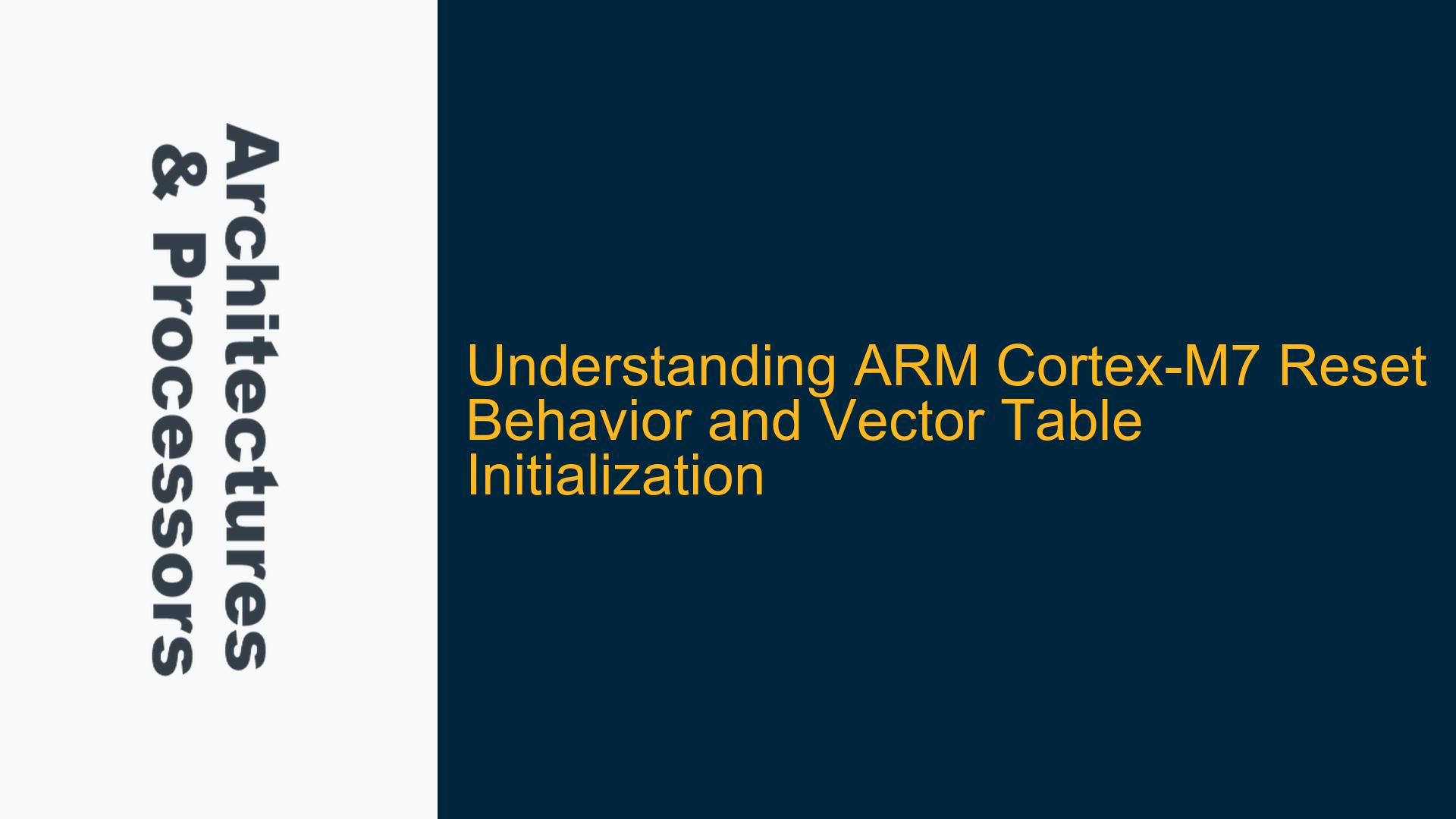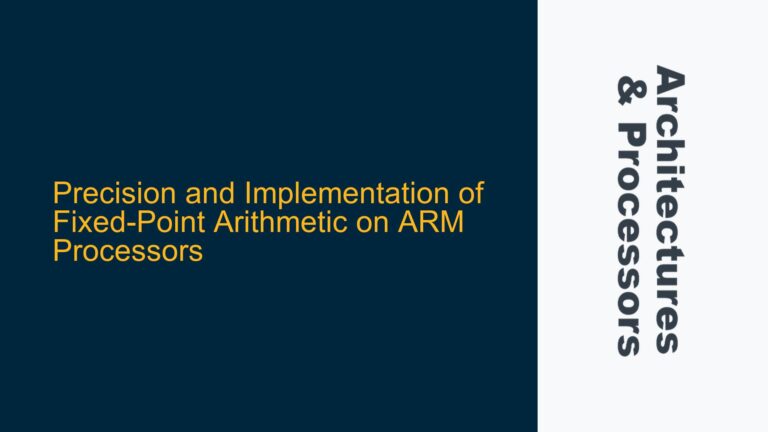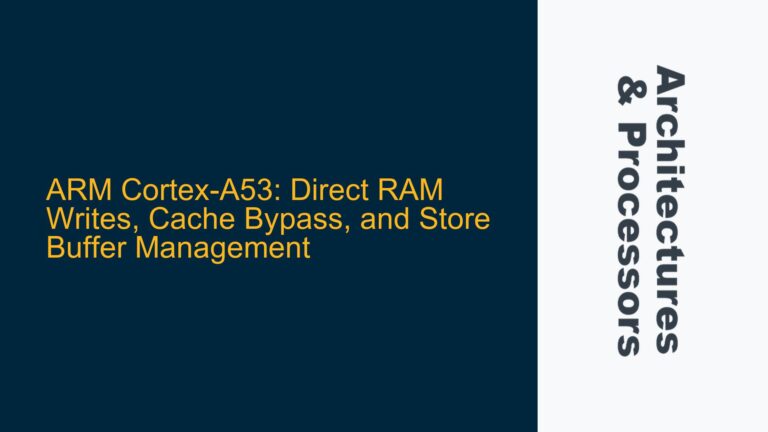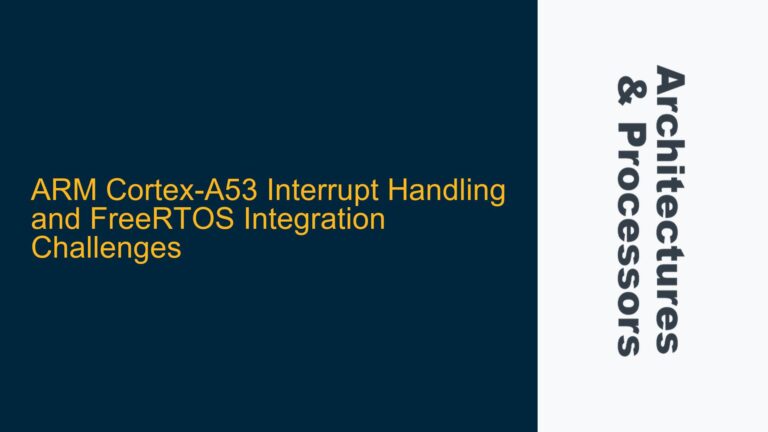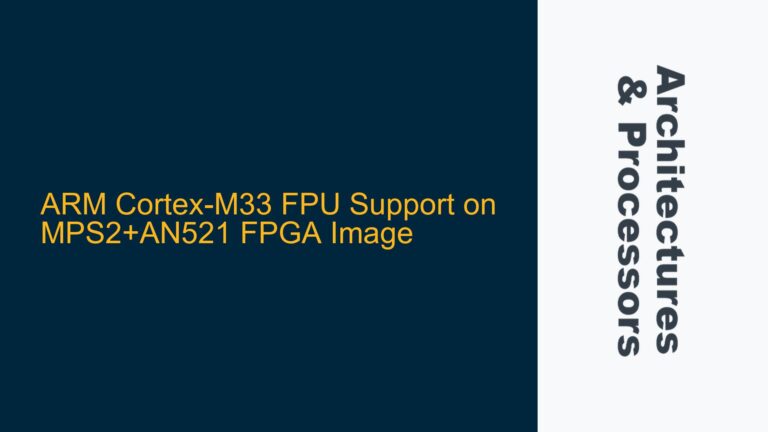ARM Cortex-M7 Reset Sequence and Vector Table Configuration
When an ARM Cortex-M7 microcontroller (MCU) resets, the processor begins execution by fetching the initial stack pointer (MSP) and the reset handler address from the vector table. Unlike earlier Cortex-M processors such as the Cortex-M3 and Cortex-M4, the Cortex-M7 introduces additional flexibility in the location of the vector table through the Vector Table Offset Register (VTOR). This flexibility can lead to confusion when developers expect the vector table to always reside at address 0x00000000. In reality, the initial vector table address is determined by the VTOR, which is configured during the reset sequence. This behavior is critical to understand when debugging startup code or analyzing disassembled memory contents.
The vector table is a data structure that contains the initial stack pointer value and the addresses of exception handlers, including the reset handler. On reset, the Cortex-M7 fetches the first two entries from the vector table: the initial Main Stack Pointer (MSP) value at offset 0x0 and the reset handler address at offset 0x4. These values are used to initialize the stack pointer and program counter (PC), respectively. However, the disassembly of memory at these addresses may not always reflect the expected values, as disassembly tools often misinterpret the vector table entries as executable instructions. This misinterpretation can obscure the actual reset behavior and lead to confusion.
The VTOR register plays a pivotal role in determining the base address of the vector table. On reset, the VTOR is initialized to a device-specific value, which may or may not be 0x00000000. For example, in the STM32F767 microcontroller, the VTOR is often configured to point to the beginning of the flash memory, which may not align with address 0x00000000. This deviation from the traditional Cortex-M3/M4 behavior necessitates careful examination of the VTOR and the memory layout to ensure proper initialization and execution of the reset handler.
Misinterpretation of Vector Table Entries and Disassembly Tools
One of the primary sources of confusion in the reset sequence is the misinterpretation of vector table entries by disassembly tools. The vector table contains 32-bit values that represent addresses, not executable instructions. However, disassembly tools often treat these values as instructions, leading to nonsensical or misleading disassembly output. For instance, the initial MSP value at address 0x0 and the reset handler address at address 0x4 are interpreted as instructions, even though they are not meant to be executed directly.
This misinterpretation is exacerbated by the fact that the Cortex-M7’s VTOR can relocate the vector table to a different memory region. If the VTOR points to a non-zero base address, the disassembly tool may not recognize the new vector table location and continue to disassemble memory starting from address 0x0. This behavior can obscure the actual reset sequence and make it difficult to trace the flow of execution from reset to the startup code.
To avoid this confusion, developers should carefully examine the VTOR value after reset and verify the memory contents at the vector table location. By understanding that the vector table contains addresses rather than instructions, developers can better interpret the disassembly output and ensure that the reset sequence proceeds as expected.
Verifying and Configuring the VTOR for Correct Reset Handling
To ensure proper reset handling on the Cortex-M7, developers must verify and configure the VTOR correctly. The VTOR register is located at address 0xE000ED08 in the System Control Block (SCB) and specifies the base address of the vector table. On reset, the VTOR is initialized to a device-specific value, which may not align with the traditional Cortex-M3/M4 behavior. For example, in the STM32F767, the VTOR is typically initialized to the beginning of the flash memory, which may be at a non-zero address.
To verify the VTOR value, developers can read the register immediately after reset and compare it to the expected vector table location. If the VTOR does not point to the correct address, the vector table may not be properly initialized, leading to undefined behavior during the reset sequence. In such cases, the VTOR should be explicitly configured to point to the correct vector table location before any exceptions are enabled.
The following steps outline the process for verifying and configuring the VTOR:
-
Read the VTOR Register: After reset, read the VTOR register at address 0xE000ED08 to determine the initial vector table location. Compare this value to the expected vector table address in the memory map.
-
Verify Vector Table Contents: Examine the memory at the VTOR-specified address to ensure that it contains the correct initial MSP value and reset handler address. The initial MSP value should be a valid stack pointer address, and the reset handler address should point to the startup code.
-
Configure the VTOR if Necessary: If the VTOR does not point to the correct vector table location, write the correct address to the VTOR register. This step is particularly important when using custom linker scripts or bootloaders that relocate the vector table.
-
Enable Exceptions: Once the VTOR is correctly configured, enable exceptions by setting the appropriate bits in the SCB and NVIC registers. This step ensures that the processor can handle interrupts and exceptions using the correct vector table.
By following these steps, developers can ensure that the Cortex-M7 reset sequence proceeds as expected and that the vector table is properly initialized. This process is critical for reliable system startup and operation, particularly in complex embedded systems with custom memory layouts or bootloaders.
Practical Example: Debugging Reset Behavior on the STM32F767
To illustrate the concepts discussed above, consider a practical example involving the STM32F767 microcontroller. Suppose a developer observes unexpected behavior during the reset sequence and suspects that the vector table is not properly initialized. The following steps can be used to debug and resolve the issue:
-
Examine the VTOR Register: Using a debugger, read the VTOR register at address 0xE000ED08 immediately after reset. Suppose the value read is 0x08000000, indicating that the vector table is located at the beginning of the flash memory.
-
Verify Vector Table Contents: Examine the memory at address 0x08000000 to verify that it contains the correct initial MSP value and reset handler address. For example, the initial MSP value might be 0x20010000, and the reset handler address might be 0x08000201.
-
Check Disassembly Output: Use the debugger’s disassembly view to examine the memory at address 0x08000000. Note that the disassembly tool may misinterpret the vector table entries as instructions, leading to nonsensical output. This behavior is expected and should not be a cause for concern.
-
Trace Execution Flow: Set a breakpoint at the reset handler address (0x08000201) and resume execution. Verify that the processor jumps to the reset handler and begins executing the startup code.
-
Configure the VTOR if Necessary: If the VTOR does not point to the correct vector table location, write the correct address to the VTOR register. For example, if the vector table is located at 0x08010000, write this value to the VTOR register.
-
Validate System Operation: After configuring the VTOR, validate that the system operates as expected. This step may involve running diagnostic tests or verifying that interrupts are handled correctly.
By following these steps, developers can systematically debug and resolve issues related to the Cortex-M7 reset sequence and vector table initialization. This approach ensures that the system starts up reliably and operates as intended, even in complex embedded environments.
Conclusion
The ARM Cortex-M7’s reset behavior and vector table initialization differ from earlier Cortex-M processors due to the introduction of the VTOR register. This flexibility allows for greater customization of the vector table location but also introduces potential sources of confusion, particularly when interpreting disassembly output. By understanding the role of the VTOR and carefully verifying the vector table contents, developers can ensure that the reset sequence proceeds as expected and that the system operates reliably. Practical debugging techniques, such as examining the VTOR register and tracing execution flow, are essential for resolving issues related to reset behavior and vector table configuration. With these insights, developers can confidently tackle the challenges of working with the Cortex-M7 and other advanced ARM processors.
